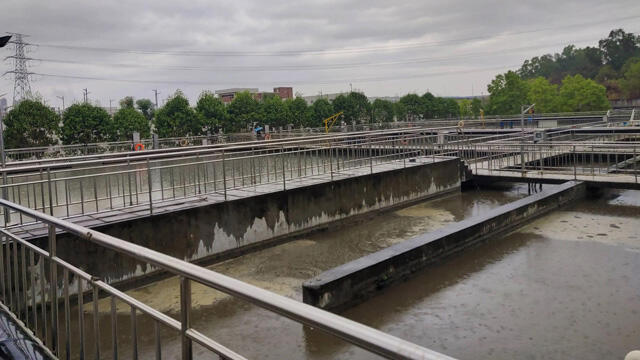The solutions of domestic sewage treatment
Publish Time:2022-06-16 Views:179
Domestic sewage is mainly various detergents and sewage, garbage, feces, etc. used in urban life. Most of them are non-toxic inorganic salts. Domestic sewage contains nitrogen, phosphorus, sulfur, and many pathogenic bacteria.
The source of domestic sewage?
Domestic sewage is the waste water discharged from the daily life of residents, mainly from residential buildings and public buildings, such as residences, institutions, schools, hospitals, shops, public places and toilets of industrial enterprises. The pollutants contained in domestic sewage are mainly organic matter (such as protein, carbohydrates, fat, urea, ammonia nitrogen, etc.) and a large number of pathogenic microorganisms (such as parasite eggs and intestinal infection viruses, etc.). The organic matter present in the domestic sewage is extremely unstable and easily corroded to produce foul odors. Bacteria and pathogens multiply with organic matter in domestic sewage as nutrition, which can lead to the spread of infectious diseases. Therefore, domestic sewage must be treated before discharge.
The harm of domestic sewage to human beings
Pathogen pollution:
Such pollutants actually enter the human BODy through various ways, and survive in the BODy, causing human diseases.
Oxygen-demanding organic matter pollution:
The more aerobic organic matter in the water BODy, the more oxygen consumption and the worse the water quality, which means the more serious the water BODy pollution is.
Eutrophication pollution:
It is a phenomenon of water pollution caused by excessive content of plant nutrients such as nitrogen and phosphorus.
Stench:
Causing adverse reactions in the human BODy
Some aquatic products are contaminated with stench and cannot be eaten or sold;
Destroy the use and value of water BODies;
It can also produce toxic hazards such as hydrogen sulfide and formaldehyde.
Acid, alkali, salt pollution:
It has adverse effects on freshwater organisms and plant growth, further harming soil quality
Increased hardness of groundwater:
Affect human drinking
For industrial water use, it must be softened
Affect the ecological environment
Toxic substance pollution:
Is a toxic hazard to biological organisms.
The significance of sewage treatment
1. Improve water quality and save water resources.
The treated sewage greatly reduces the degree of water pollution, whether it is discharged or reused, it can meet the standard and save water resources.
2. Improve the ecological environment.
The discharge of untreated sewage into rivers will not only pollute the environment, but also adversely affect the quality of people's domestic water.
3. Promote the water circulation system.
The natural cycle of water is a non-equilibrium open system with an organizational structure, and the social cycle of water is a balanced system with an artificial organizational structure.
The solutions of domestic sewage treatment
1. Aerated biological filter
The aerated biological filter is a new process integrating biological oxidation and throttling suspended solids, which can effectively remove suspended particulate matter, COD, BOD5, nitrifying substances, remove nitrogen and phosphorus, and remove harmful substances. It has the advantages of saving time, consumption and money. However, this process has strict requirements on SS content, which needs to be controlled between 60 and 100 mg/L, so a pretreatment unit needs to be set up when using it.
Biological aerated filters are widely used in advanced water treatment, micro-pollution source water treatment, refractory organic wastewater treatment, and low-temperature sewage treatment.
2. A/O process
The A/O process is called anaerobic/aerobic process, the A section is the anaerobic section, which is used for denitrification and phosphorus removal; the O section is the aerobic section, which is used to remove the organic matter in the water. The A/O process can be used in parallel or individually. It is mostly used for the treatment of organic wastewater with a high degree of eutrophication.
3. Biological contact oxidation method
The biological contact oxidation method has the characteristics of the activated sludge method and the biofilm method. It is an aerobic biofilm process. The contact oxidation tank is equipped with a filler with a large specific surface area, and the microorganisms are fixed on the surface of the filler in the form of a biofilm. . An oxygen-deficient or anaerobic environment is formed inside the membrane, which promotes the growth of anaerobic bacteria and facultative bacteria. In addition, the biological community composed of aerobic bacteria, protozoa and metazoans on the surface of the membrane can effectively degrade organic matter and COD.
4. UASB Upflow Anaerobic Sludge Bed
The advantage of UASB lies in the large concentration and high activity of microorganisms in the sludge bed. High volume and impact load, short hydraulic retention time, simple equipment, low cost, convenient operation and easy management.
5. SBR sequencing batch activated sludge method
SBR is a treatment technology that can operate intermittently, and can adapt to sewage treatment occasions with intermittent discharge and large flow changes. There is no need to add equipment such as adjustment tank, sedimentation tank, and secondary sedimentation tank in the reaction process. The reaction can be controlled by automatic program, and the operation is simple. The equipment occupies a small area and has a strong impact load bearing capacity, which can effectively treat toxic or high-concentration organic wastewater.
BIOETP provide service for ETP/STP designing, equipment manufacturing, plant installation, operation training and maintenance service. also provide solutions and equipments for almost all kinds of sludge dewatering treatment. also provide smell control solutions and smell control plant and related equipmentsfor APIs industry and feed processing industry.
So, if you have any ETP/STP , sludge dewatering , smell control requirement aroused, please feel free to contact BIOETP. You can find our contact on BIOETP official website www.bioetp.com.
